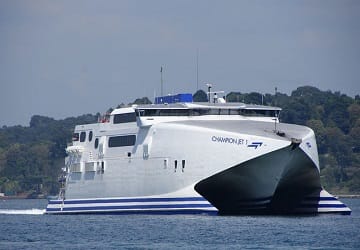
-
Recent Searches
Recent Searches
- Travel Alerts
- My Account
- Customer Service
-
United Kingdom
Heraklion to Syros Ferry
The Heraklion Syros ferry route connects Crete with Cyclades Islands. Currently there is just the 1 ferry company operating this ferry service, Sea Jets. The crossing operates up to 2 times each week with sailing durations from around 11 hours 25 minutes.
Heraklion Syros sailing durations and frequency may vary from season to season so we’d advise doing a live check to get the most up to date information.
Heraklion Guide
The Greek city of Heraklion is the capital and largest city on the island of Crete. A popular visitor attraction near the city is Knossos, which is around 5 km from Heraklion. This important archaeological site was the Palace of King Minos and home to the Minotaur, if legend is to be believed. The palace was built over the remains of a former Neolithic settlement in around 1900 BC.
An important attraction in the city itself is the Archaeological Museum which can be found on one corner of the central Eleftherias Square, in a converted power station. The museum collects and displays many artefacts from Knossos, Archanes, Phaestos, Zakros and many other important archaeological sites on the island. The museum's collection spans several thousand years and includes the Phaestos disc, classic Hellenic and Roman sculptures, frescos, jewellery, wall paintings and pottery.
Visitors to Heraklion can take a ferry from the port, which is important for both passenger services and cargo, to destinations including Santorini, Ios, Paros, Mykonos and Rhodes. There are also daily sailings to the mainland port of Piraeus.
Syros Guide
The Greek island of Syros is one of the Cyclades group of islands and is unusual in that the island's architecture is more medieval rather than the more typical Cycladic. The island's capital is Ermoupolis and has some fine examples of Venetian mansions to see. In the Vaporia quarter of the capital visitors will find some lovely large churches and impressive neoclassical buildings, such as the Town Hall and Apollo Theatre in the central square. Also popular with visitors are the island's beaches which are well equipped for tourists and have a good range of facilities.
The island can trace its history back to the 3rd millennium BC where signs of inhabitation have been found in the Halandriani and Kastri parts of the island. Artefacts found indicate that there was some kind of metal workshop on the island which possibly had a trading relationship with Asia Minor. The Samians occupied the island in the 6th century BC and is when many of the island's inhabitants moved to the island. At that time, the important physician and philosopher Pherecydis was born in Syros and some years later he went to Samos and became the teacher of Pythagoras.


